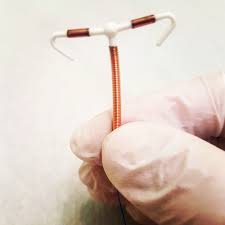Women all over the country who have been implanted with a Paragard IUD birth control device are suing the device manufacturer over injuries they suffered after their IUD broke or migrated out of position and damaged their internal organs. Many of the women pursuing legal claims over Paragard IUD injuries required invasive surgery to retrieve pieces of their IUD that had become embedded in their uterine tissue or migrated to other parts of their body. The FDA has received more than 1,600 reports of complications from Paragard IUDs, including device fracture, migration and a loss of reproductive health caused by broken IUDs. To speak to an attorney about pursuing compensation for Paragard IUD injuries, contact our consumer advocates at Leading Justice today. We are committed to helping consumers who have been harmed by defective medical devices and we can put you in touch with an attorney experienced in handling product liability lawsuits.
About the Paragard Copper IUD
Paragard is a small, hormone-free IUD (intrauterine device) commonly used as a form of long-term birth control in women. The Paragard IUD is made primarily of flexible plastic wrapped in copper and the T-shaped device can be inserted into the uterus during an outpatient procedure. Unlike most other IUDs, which use artificial hormones to prevent pregnancy, Paragard’s copper coil is designed to provide pregnancy protection by producing an inflammatory reaction that interferes with sperm motility and egg fertilization and implantation. Since it was first introduced in 1984, Paragard has become a popular reversible birth control option for women all over the country, as it doesn’t pose the same risk of blood clots as traditional hormone-containing IUDs. Paragard is marketed as being over 99% effective at preventing pregnancy and, once in place, the device is meant to last up to 10 years or until the patient wishes to have it removed. Unfortunately, many women implanted with Paragard are suffering severe complications during and after removal of their IUD.
Potential Side Effects of Paragard IUD
The main problem with Paragard appears to be that the IUD can break apart unexpectedly, either while in the uterus or during removal of the device, which can pose a serious risk if fractured pieces of the IUD remain embedded in the uterus or migrate to other parts of the body. In this case, women with broken Paragard IUDs may require invasive surgery or possibly even a total hysterectomy to retrieve the broken pieces. The most common side effects associated with Paragard IUDs include the following:
- Fractured or broken IUD
- Broken pieces of IUD left embedded in uterus
- Perforation of the uterus
- Ectopic pregnancy
- Migration of broken pieces into other organs
- Uterine infection
- Pain, cramping or bleeding
- Damage to internal organs
- Loss of reproductive health
- Need for revision surgery to remove the device
- Need for a total hysterectomy to retrieve broken pieces
Even the Paragard website indicates that women with a Paragard IUD may experience serious side effects, warning that “In rare cases, Paragard may attach to or go through the uterus and cause other problems.” Unfortunately, for women with broken Paragard IUDs, surgery is often the only option to remove the broken pieces.
Reports of Problems with Paragard Breakage
Many women have reported suffering serious health problems and requiring additional surgeries as a result of Paragard IUD breakage. Since 2010, the FDA has received more than 1,600 reports of Paragard IUD breakage and other problems in users. In one case, a Paragard IUD was removed after 6.5 years and both “arms” of the device were missing. A sonogram showed that the arms were embedded in the patient’s uterine tissue. In another case, a woman had her Paragard IUD removed after 8.5 years, and upon removal, the doctor discovered that the copper coil was missing from the stem portion of the device. In 2014, a hospital reported four cases in which Paragard IUDs fractured upon removal. According to the report, in three of the four incidents, the device was well under its expected lifespan of 10 years.
Paragard IUD Lawsuits Over Severe Complications
Women who have suffered serious complications from a broken Paragard IUD are pursuing legal claims against the device manufacturer, alleging that the company should have provided adequate warnings about the potential for Paragard to fracture or migrate out of position, or removed the device from the market immediately after becoming aware of the potential for Paragard IUDs to cause severe complications in users. If you or someone you know required surgery to remove a broken Paragard IUD, or if you have suffered serious injuries from a defective IUD, our consumer advocates at Leading Justice can help. Contact our consumer advocates today to speak to an experienced product liability lawyer about your Paragard IUD injuries.


